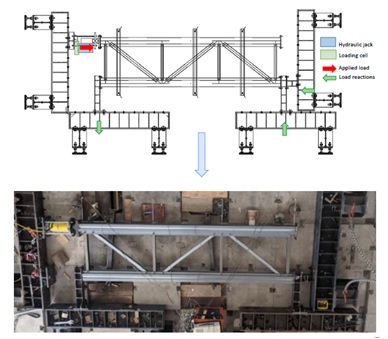Eng. Christian Dago Ngodji, Eng. Mathieu Gauchey, Eng. Géraldine Wain | CRM Group, Belgium
Eng. PhD Francesco Morelli, Eng. PhD Agnese Natali | Università di Pisa, Italy
Eng. Francesco Lippi | S.I.T.A.
Gli acquisti online sono cresciuti in modo significativo negli ultimi anni. Questa elevata domanda è risultato sia della pandemia di covid-19 sia del cambiamento nel comportamento dei consumatori. Attualmente, si può acquistare tutto online, dagli articoli di bellezza al cibo. Per assicurare questa crescente domanda e una rapida distribuzione, i rivenditori cercano soluzioni ad alta capacità di stoccaggio. Le strutture High Bay Warehouses (HBW) sono la soluzione ideale per lo stoccaggio di grandi volumi e per migliorare la logistica e la movimentazione delle merci. Le HBW sono strutture leggere realizzate principalmente con componenti in acciaio con processi di lavorazioni a freddo come montanti, controventi e travi per pallet. L’uso di acciai ad alta resistenza può ottimizzare l’uso di questi profili e, garantendo prestazioni simili, può portare a riduzioni in peso degli elementi, minori emissioni di CO2 e minor costo.
 1. Introduction
1. Introduction
High Bay Warehouses (HBW) are high density storage solutions to maximize space. There are lightweight structures mainly made from steel cold-formed components. Dimensions of such structures can reach a 45 m height, with various dimensions for length and width depending on site size. The pallets are stored on horizontal beams which are linked to frames with fast or bolted connections. The HBW can be single, double or multiple depth depending on the number of pallets that can be stored in the bay depth.
The objective of this paper is the optimization of the HBW by using high strength steels to achieve weight reduction, cost savings and to decrease CO2 emissions while keeping similar performances than the reference solution made in common steel, here in S350GD. In this study, the use of structural galvanized high strength steels, especially the HyPer® grades from ArcelorMittal, has been used to maximize the design.
2. Reference case
The reference case was defined based on a market and statistical analysis. Data were gathered from four main international companies producing HBW for logistical solutions in order to represent the most common solutions for Europe, the United States, Mexico, India and Saudi Arabi. A total of 63 projects were analyzed. This market overview permitted to identify the common dimensions, materials and typologies used to determine the main characteristics of the reference case structure, as presented on figure 1 and figure 2 […]
Leggi l’articolo completo su Costruzioni Metalliche n. 3/2023.

